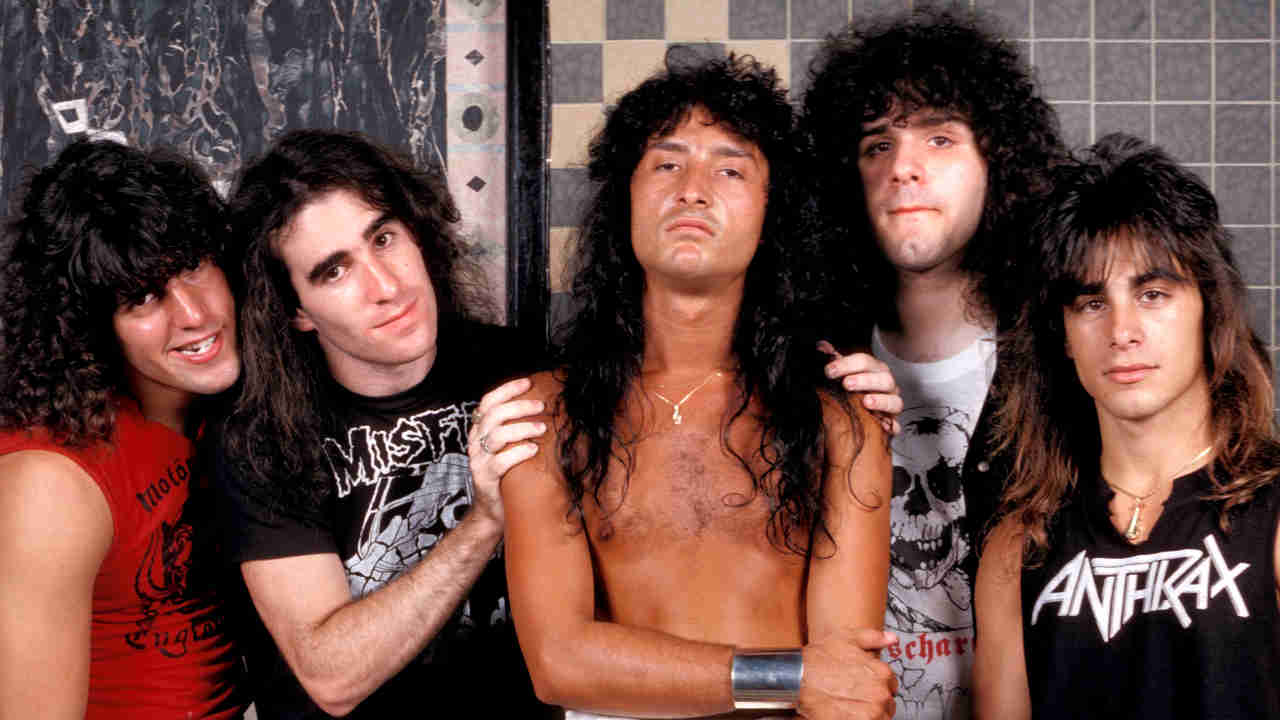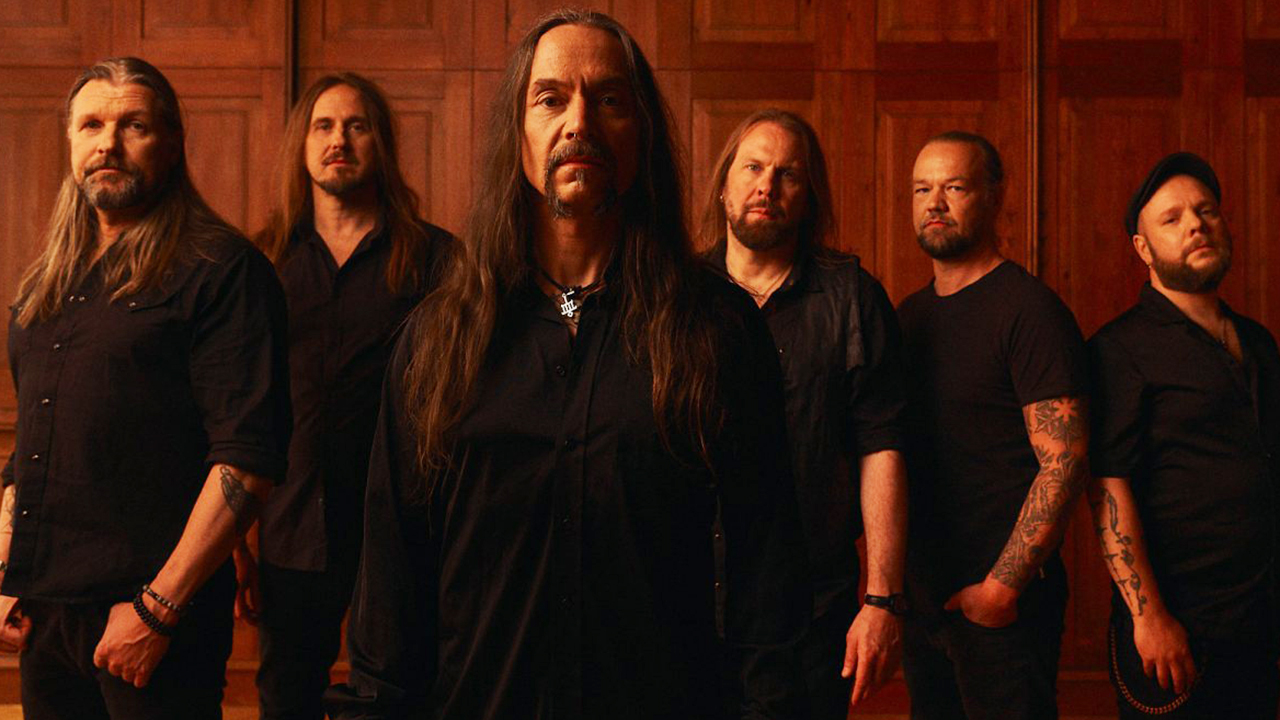“We took influences from the New York hardcore scene. Our stuff was faster than in the Bay Area”: the 100mph story of East Coast thrash
The inside story of 80s thrash’s great East Coast vs West Coast rivalry

Where did the term ‘thrash’ actually emanate in a metal context? While many have laid claim, there’s a strong case for looking to New York for the answer. Why? Because in 1982, when Metallica were still just a demo band, Slayer had barely started out and Megadeth didn’t even exist, ROIR Records (pronounced ‘roar’, Reach Out International Records) released a compilation titled New York Thrash – and that may well have been the first proper use of the word in a musical context. The odd thing is that the record gathered together punk and hardcore bands from the area. But there again, perhaps it isn’t too surprising to have ‘thrash’ first associated with such bands, at least on the East Coast.
“A lot of us young thrash bands playing in that area initially took influences from the thriving New York hardcore scene, so our stuff was more straight ahead and faster than was the case in the Bay Area,” says original Anthrax and Nuclear Assault bassist Danny Lilker. “Due to the more hardcore sound a lot of New York bands had, we mixed in with the actual NYHC scene a lot, which you didn’t see that much way back in 1985 anywhere else. Nuclear Assault were equally at home either at L’Amours – the notorious metal club in Brooklyn – playing with Exodus, or at CBGB’s in the Bowery, playing with Agnostic Front. Only a few years later you saw this kind of crossover everywhere else.”
The early New York thrash scene seemed to be predicated as much on a devotion to hardcore as to the metal giants, thereby separating itself from what was happening in the more NWOBHM-inspired hotbed on America’s West Coast. However, Anthrax guitarist Scott Ian feels hardcore was a more universal inspiration for thrashers than is perhaps acknowledged by some.
“To suggest it was only bands from New York and New Jersey who were picking up on this is wrong,” he says. “Listen to what Slayer were doing, and you’re not gonna tell me that they weren’t into hardcore. Of course they were. And how often did you see photos of James Hetfield in his early days wearing a Broken Bones T-shirt? Hardcore was really important to the development of thrash generally in its formative stages.”

Former Overkill drummer Rat Skates, though, believes that the East Coast thrash style was born almost out of a sense of musical and creative confusion. “It was a stealth evolution, within a unique and confusing tailspin of trends that were happening simultaneously: punk, disco, new wave, metal, prog rock and stoner music. This is rarely documented, but the confusion from 1980-1984 had left a soggy footing for thrash to take a firm first step.
“When Van Halen broke, every guitarist was a bandana-wearing, Eruption-playing wannabe. The ‘thrash’ aspect of the New York scene was comparatively small, however. One reason was we had a network of clubs that would only book high revenue-generating cover bands. Twisted Sister were about the only local band who were able to break these rules. They deserve huge respect for their perseverance, and direct influence on all of us soon-to-be thrash musicians who were taking notes on the sidelines.”
Still, when it came to thrash, the East Coast scene, so important in the rise of punk and hardcore, lagged behind their cousins on the other side of the country, almost on all levels. Ian, for one, feels this was a fair reflection of the massive differences in the development of thrash metal between the two extremities of America.
Sign up below to get the latest from Metal Hammer, plus exclusive special offers, direct to your inbox!
“You could say that the Bay Area got more attention, and we were overlooked in New York. But come on, name the major bands who came from the West Coast. Not just the Bay Area, but the whole region. You had Metallica leading the way, with Megadeth, Slayer, Testament, Exodus and Vio-lence. The list was impressive. And New York? There was Anthrax, Overkill and… well, not to be unfair, was there anyone else? I’d say not. And if we’re talking about international success, then you can take Overkill out of the picture as well. Anthrax were really alone in making our mark. On those grounds alone, can you really be surprised that the Bay Area got more attention?”
Ian’s former Anthrax bandmate Danny Lilker, has a far more positive view of the quality of those bands from those times. “If we are talking strictly metal, there was Whiplash, Carnivore, Bloodfeast, Demolition Hammer, Prime Evil, Anthrax, Nuclear Assault, S.O.D., Overkill, Gothic Slam. And if you want to sneak in some hardcore bands who also appealed to thrash fans, we had Agnostic Front, Cro-Mags, Murphy’s Law, Ludichrist, Prong, Crumbsuckers, Adrenalin O.D.… there was a lot of talent in the New York area at the time. And I’ve probably missed out a load as well!”

But even the most diehard among those who champion the delights of the East Coast sound have to admit that unless you’re an aficionado of the scene, many of those names are about as well-known these days as flugelhorn players from Estonia. The quality of those bands can never be questioned but when you put this list up against those from the West Coast in general… well, Ian’s point is a valid one.
Rat Skates believes that one of the reasons the East Coast lived in the shadow of the Bay Area was that it took longer for bands in the former locale to latch onto the thrash charabanc. “The East Coast was always behind the West Coast. The evolution of thrash was our adrenalin-based interpretations of Sabbath, Priest, Maiden and the NWOBHM. The West Coast musicians (James Hetfield, Gary Holt, Dave Mustaine, Kerry King) had raised the bars of extremity much earlier than happened on the East Coast. This is interesting because, culturally, NY tends to be a more aggressive and faster paced environment than California, but it didn’t translate this way musically.”
One of the fascinating aspects of looking back at the New York scene in the 1980s is the way those who were immersed in it at the time can have differing opinions on what actually happened. Lilker believes that, in general, New York bands were more extreme than anything the West Coast had to offer.
“The Bay Area bands seemed to concentrate more on melody and technicality than us lot in NY. It was like the Bay Area musicians had more NWOBHM in their sound, while a lot of us on the East Coast took greater influences from that thriving NY hardcore scene, so our stuff was more straightahead and faster. There were exceptions in both scenes. Overkill were more of a fast power metal band and Sadus, from the Bay Area, were much more intense.”
Among the reasons that the names of bands from the West Coast, in particular the Bay Area, seem to readily fall like a torrent, whereas for the other coast it’s more of a trickle, is that there were so few bands out of the New York/New Jersey area who had obvious commercial potential. Think about it: while at least half a dozen names from San Francisco and Los Angeles in particular got record deals with major labels, virtually none of the names reeled off by Lilker got similar exposure.
The New Yorkers were steadfastly more underground, which may also conversely mean that the scene was more open to creative opportunities than was the case in California. Prog metal pioneers Dream Theater had a considerable groundswell of support from thrashers in their early days. And Anthrax can claim to be genuine musical explorers, being the first thrash metal act to bring in a truly melodic singer in the shape of Joey Belladonna and also to explore the rap-metal crossover potential. Yet each time they made a leap of faith, their pioneering spirit was impaled on barbed cynicism – only for others, usually from the Bay Area, to follow suit a couple of years later. So was New York more creatively independent than the West Coast?
“I don’t think so,” says Ian. “You’re not gonna tell me that Metallica weren’t doing new things all the time? If you’re talking about commercial success, then the West Coast had more of it. But I do think this was down to the fact the bands and musicianship were just a lot better.”
While there may be disagreements between the protagonists of the time over the relative merits of the New York area thrash scene in the 80s, nonetheless there appears to be a broad agreement that the camaraderie between the bands on that side of America was sacrosanct.
“It was ‘us against the world’,” believes Lilker. “Partly because there weren’t that many bands around New York. Plus we were basically on the ground floor as far as the thrash metal and crossover scenes were concerned, so it was quite exciting to take part in the birthing of a relatively new genre.”
Rat Skates feels, though, that this sense of togetherness was also complemented by an air of competitiveness – one that actually sowed the seeds for the ultimate demise of the scene. “There was friendship, but an underlying competitiveness as well, which is helpful in any group effort to avoid complacency. The camaraderie was based on our status as the ‘leaders’ of the scene, albeit small and underground. The fans had put us on a pedestal of sorts, so there was a ‘celebrity’-type unity between the bands. The internal competitiveness – all of us looking to play faster and more aggressively – was something that continuously pushed thrash to new levels of extremism. In the end, though, it meant that the fuse burned too quickly, and ultimately led to the demise not just of the New York thrash set-up, but also the whole genre.”
So, was New York vital to the thrash genre as a whole? Or merely an adjunct to the more distinguished Bay Area scene? “I never look at these things in a geographical sense,” says Ian. “For me, it wasn’t about whether you were from New York, San Francisco, Los Angeles or Europe. Thrash was a global thing. But all I would say is that looking at things now, those of us who were playing that sort of music on the East Coast played our role.”
Originally published in Metal Hammer Presents Metallica & The Story Of Thrash
Malcolm Dome had an illustrious and celebrated career which stretched back to working for Record Mirror magazine in the late 70s and Metal Fury in the early 80s before joining Kerrang! at its launch in 1981. His first book, Encyclopedia Metallica, published in 1981, may have been the inspiration for the name of a certain band formed that same year. Dome is also credited with inventing the term "thrash metal" while writing about the Anthrax song Metal Thrashing Mad in 1984. With the launch of Classic Rock magazine in 1998 he became involved with that title, sister magazine Metal Hammer, and was a contributor to Prog magazine since its inception in 2009. He died in 2021.

